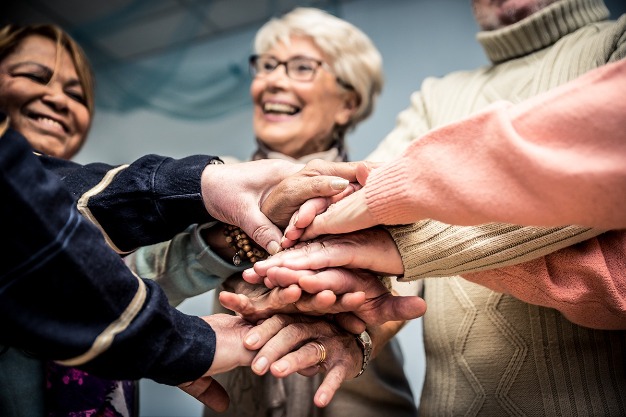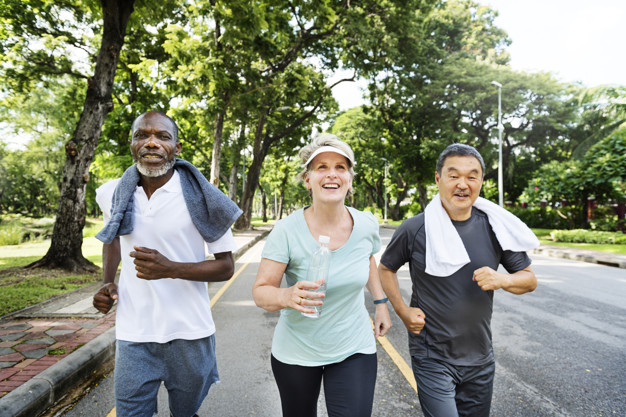
Sleep Tips for Older Adults
June 15, 2021
Preventing Alzheimer’s Disease and Dementia—or Slowing its Progress
June 15, 2021
What are the benefits of exercise for older adults?
There are many reasons why we tend to slow down and become more sedentary with age. It may be due to health problems, weight or pain issues, or worries about falling. Or perhaps you think that exercising simply isn’t for you. But as you grow older, an active lifestyle becomes more important than ever to your health.
A recent Swedish study found that physical activity was the number one contributor to longevity, adding extra years to your life—even if you don’t start exercising until your senior years. But getting active is not just about adding years to your life, it’s about adding life to your years.
Getting moving can help boost your energy, maintain your independence, protect your heart, and manage symptoms of illness or pain as well as your weight. Regular exercise is also good for your mind, mood, and memory. It’s never too late to find simple, enjoyable ways to become more active, improve your mood and outlook, and reap all of the physical and mental health benefits of exercise.
Physical health benefits of exercise for seniors
As an older adult, exercise can help you to:
Maintain or lose weight. As your metabolism naturally slows with age, maintaining a healthy weight can become a challenge. Regular exercise helps increase your metabolism and build muscle mass, helping your body to burn more calories.
Reduce the impact of illness and chronic disease. People who exercise tend to have improved immune and digestive functioning, better blood pressure and bone density, and a lower risk of Alzheimer’s disease, diabetes, obesity, heart disease, osteoporosis, and certain cancers.
Enhance your mobility, flexibility, and balance. Exercise improves your strength, flexibility, and posture, which in turn can help with your balance and coordination, and reduce your risk of falls. Strength training can also help alleviate the symptoms of chronic conditions such as arthritis.
Mental health benefits
Exercise can also help you to:
Improve how well you sleep. Quality sleep is vital for your overall health as you get older. Regular activity can help you fall asleep faster, sleep more deeply, and wake feeling more energetic and refreshed.
Boost your mood and self-confidence. Exercise is a huge stress reliever and the endorphins produced can actually help reduce feelings of sadness, depression, and anxiety. Being active and feeling strong can also help you feel more self-confident.
Improve your brain function Activities like Sudoku or crossword puzzles can help keep your brain active, but little comes close to the beneficial effects of exercise on the brain. It can aid brain functions as diverse as multitasking and creativity, and help to prevent memory loss, cognitive decline, and dementia. Getting active may even help slow the progression of brain disorders such as Alzheimer’s disease.
What if you hate to exercise?
If you dread working out, you’re not alone. But you don’t have to exercise until you’re soaked in sweat or every muscle aches to make a big difference to your health. Think about activities that you enjoy and how you can incorporate them into an exercise routine:
- Listen to music or an audio book while lifting weights.
- Window shop while walking laps at the mall.
- Get competitive while playing tennis.
- Take photographs on a nature hike.
- Meet new people at a yoga class or fitness center.
- Watch a favorite movie or TV show while walking on the treadmill.
- Instead of chatting with a friend over coffee, chat while walking, stretching, or strength training.
- Walk the golf course instead of using a cart.
- Walk or play fetch with a dog. If you don’t own a dog, offer to take a neighbor’s dog for a walk or volunteer at a pet shelter or rescue group.
- Go for a run, walk, or cycle when you’re feeling stressed—see how much better you feel afterward.
- Find an exercise buddy, someone whose company you really enjoy, and try activities you’ve never tried before—you may find something you love. At worst, you’ve spent time with a good friend.
Building a balanced exercise plan
Staying active is not a science. Just remember that mixing different types of physical activity helps to both keep your workouts interesting and improve your overall health. The key is to find activities that you enjoy—based on the four building blocks of fitness. These are:
1: Balance
What it is: Balance exercises help maintain standing and stability, whether you’re stationary or moving around. Try yoga, tai chi, and posture exercises to gain confidence with balance.
Why it’s good for you: It improves your balance, posture, and the quality of your walking. It also reduces your risk of falling or fear of falls.
2: Cardio
What it is: Cardiovascular exercise uses large muscle groups in rhythmic motions over a period of time. It gets your heart pumping and may even leave you feeling a little short of breath. Cardio workouts include walking, stair climbing, swimming, hiking, cycling, rowing, tennis, and dancing.
Why it’s good for you: Cardio exercise helps lessen fatigue and shortness of breath. It also promotes independence by improving endurance for daily activities such as walking, house cleaning, and errands.
3: Strength and power training
What it is: Strength training builds up muscle with repetitive motion using weight or external resistance from machines, free weights, elastic bands, or your own body weight. Power training is often strength training done at a faster speed to increase power and reaction times.
Why it’s good for you: Strength training helps prevent loss of bone mass, builds muscle, and improves balance—important for staying active and avoiding falls. Power training can improve your speed while crossing the street, for example, or prevent falls by enabling you to react quickly if you start to trip or lose balance. Building strength and power will help you stay independent and make day-to-day activities such as opening a jar, getting in and out of a car, and lifting objects easier.
4: Flexibility
What it is: Flexibility workouts challenge the ability of your body’s joints to move freely through a full range of motion. This can be done through stationary stretches or stretches that involve movement to keep your muscles and joints supple and less prone to injury. Yoga is an excellent means of improving flexibility.
Why it’s good for you: Flexibility helps your body stay limber and increases your range of movement for ordinary physical activities, such as looking behind while driving, tying your shoes, shampooing your hair, or playing with your grandchildren.
Tips for staying motivated
It’s easy to become discouraged when illness, injury, or changes in the weather interrupt your routine and seem to set you back to square one. But there are ways to stay motivated when life’s challenges get in the way.
Focus on short-term goals, such as improving your mood and energy levels and reducing stress, rather than goals such as weight loss, which can take longer to achieve.
Reward yourself when you successfully complete a workout, reach a new fitness goal, or simply show up on a day when you were tempted to ditch your activity plans. Choose something you look forward to, but don’t allow yourself to do until after exercising, such as having a hot bath or a favorite cup of coffee.
Keep a log. Writing down your activities or using an app to track your progress not only holds you accountable, but is also a useful reminder of your accomplishments.
Find support. When you work out with a friend or family member, you can encourage and motivate each other.
